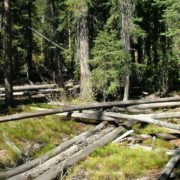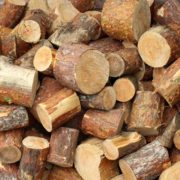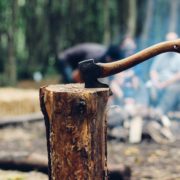Should I Invest in Timberland Real Estate?
I’m often asked “Should I invest in timberland?” and “If I invest in timberland, is it better than investing in stocks, bonds, farmland, etc. etc.?” My answer is generally “It depends” because the term ‘better’ is almost always subjective… What is better for one investor may not be for another depending on end goals. Understanding the basics of how to establish and achieve your goals in a timber investment is paramount.
Timing Your Investment Goal
We all want our investments to grow in value and make us wealthier, and timberland is just that… a growing investment (pun intended). It enjoys stable, steady growth, paying no attention to the volatility of today’s political world, and that is one reason why many of the wealthiest people in the world invest in timberland as a method of diversification and asset protection. Annualized returns range from 6-20% in my experience, sometimes more, with many factors weighing in, almost all of them related to the demand of the local timber market equally or greater than the actual land related aspects like site quality and stocking.

But, while well stocked and managed timber stands grow in size and value each year, unless you acquire a sizable portfolio, cash flows may only come every 3-7 years after reaching a merchantable size. So, when deciding to invest in timberland, it’s important to be able to service any debt obligations during those periods between cash flows and before buying, understand when you’d like to receive the bulk of the cash flows that will come during the timber’s “rotation” (financial lifetime of the stand). For example, if you intend for your timber investment to pay for your 3-year old child’s college fund, it may be wise for you to buy a well-stocked tract of pine plantation that’s 1-2 years old. This should enable you to buy more acres at a lower price, and those stands should be reaching a merchantable status as your child approaches 18 years old. That plantation will generally see 3-4 thinnings between the age of 15 and 30, all the while graduating into more and more valuable product classes through the process referee to as “product change,” until you ultimately clearcut and begin the process again.
But, if you’d purchased the wrong age class of timber, you may have missed your income window and had to come out of pocket or borrow money while you waited on the stand to mature. Please note: The merchantable age of a stand is subject to several factors, and the age of clearcutting and when you thin may change based on your objectives. The ages of 15 and 30 are just commonly seen benchmark ages in the southeast for private landowners. Finding the right timberland tract for your goals is key to success as an investor in this type of property.
Define Your Management Strategy
Elaborating further, a critical part of investing in timberland is having a successful management strategy. Are you managing for money, for wildlife, or a balance of both? They don’t have to be mutually exclusive, but you’re also not growing trees for future harvest(s) inside those huge food plots you installed to hunt monster bucks and turkey in. So, before or after you buy a tract of timberland, enlist a true consulting forester that acts as your fiduciary, working purely for your best interests, in order to help you establish the best management plan for you. We have many forestry consultants on our team that work hand in hand with landowners looking to balance timberland investment and recreational use as well as landowners looking for pure economic return. Whatever your objectives, without a sound timber management strategy in place, you will leave a lot of money and time on the table.

Another major driver in timberland returns, and possibly the most important, is competition. Timber and the product classes that it consists of are commodities, and the value of those are greatly affected by supply and demand. As such, you want your timber investment to be located in an area with a high concentration of mills that compete for the product classes your timberland will produce, generally within a 60+/- mile hauling distance of that market area (commonly referred to as your “wood basket”.) If you purchase timberland in an area with only a single or few mills, demand for your timber will likely be low and local supply will be high, so the timber prices paid will generally be dictated and depressed rather than driven up by market competition, which negatively effects your returns in both the short and long term. And, once it’s time, it’s harder to sell timberland in an area with consistently low timber prices.
In the past, I’ve elaborated on the importance of site index, site prep and planting, and the many tax advantages of owning timberland vs. other investments, such as basis depletion, a multitude of deductible capital expenditures, long term capital gains treatment, and conservation easements. But, one of my favorite attributes of timberland is how tangible it is vs non-land investments. Timberland is an investment with roots than run deep, providing an opportunity for you to manage your timberland in a way that allows you to spend time with your friends and family outdoors, teaching them about the blessings bestowed upon as land stewards, and the ability to leave a legacy behind that your loved ones can benefit from for generations to come. That kind of return is beyond measure.
This post is part of the 2019 Future Leaders Committee content generation initiative. The initiative is directed at further establishing RLI as “The Voice of Land” in the land real estate industry for land professionals and landowners. For more posts like this, click here.
 About The Author: Clint Flowers, ALC is a top producer with National Land Realty, a member of the REALTORS Land Institute of Alabama, and a member of the 2018 Future Leaders Committee. He was a NLR Top Producer Nationwide in 2016 and 2017. He also won the 2017 APEX National Broker of the Year award for Timberland.
About The Author: Clint Flowers, ALC is a top producer with National Land Realty, a member of the REALTORS Land Institute of Alabama, and a member of the 2018 Future Leaders Committee. He was a NLR Top Producer Nationwide in 2016 and 2017. He also won the 2017 APEX National Broker of the Year award for Timberland.












My brother asked me if it’s a good idea to invest in timberland properties. Personally, I think he should because it will grow in value someday. Thanks for saying that he should define his management strategy first before he finds a good company to start his investment with, so I’ll make sure that he gets that advice.